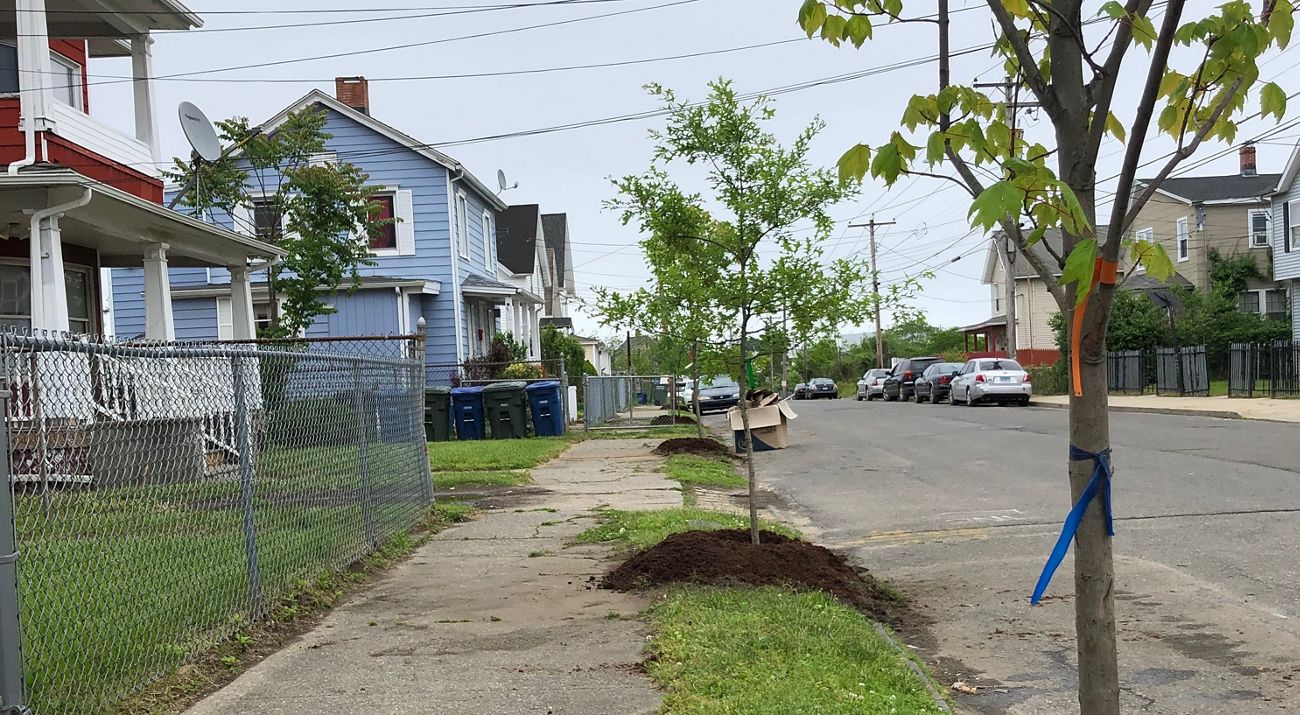Reforestation revolution would save lives across U.S. cities
As climate change accelerates, making full use of trees’ ability to provide natural cooling can reduce heat-related health risks – and cut power bills
Media Contacts
-
Tom Jennings
The Nature Conservancy (U.K.)
Email: tom.jennings@tnc.org -
Claire Griffin
The Nature Conservancy (U.S.)
Email: claire.griffin@nature.org
As cities across the United States plan for a hotter future, a new study highlights the potential of an ambitious, nationwide program of urban tree-planting to reduce health imbalances between neighborhoods and help communities adapt to a changing climate.
Published in the journal npj Urban Sustainability, the paper – led by scientists from The Nature Conservancy (TNC) alongside the U.S. Department of Energy’s Pacific Northwest National Laboratory – examined 5,723 urban municipalities and other areas across the U.S. to put tangible numbers to the extent to which the nature-based cooling provided by trees influences the number of heat-related deaths and doctors’ visits in those neighborhoods.
Nationwide, neighborhoods that are predominately people of color (POC) have less tree cover, and this inequality has real impacts. Each year, POC neighborhoods have 190 more deaths and 30,000 more doctors’ visits than would be the case if they had the tree cover prevalent in white neighborhoods.
Commenting on the significance of this study, lead author Rob McDonald – who steers TNC’s global science work on nature-based solutions – said: “The power of urban trees to make heatwaves more bearable by cooling the air is well-mapped by this point. Likewise, the all-too-frequent inequality in tree cover between wealthier and less privileged neighborhoods is similarly well-documented at this stage.
“What is novel about our study is the way we’ve directly connected the cooling contribution of tree cover to public health, via the incidence of heat-related deaths and health emergencies. By putting hard numbers to the heat-health benefits of trees, we show how cities that embrace ambitious urban reforestation policies can cut both their medical bills and their power bills – with all the additional costs and emissions those require – through harnessing the timeless power of nature-based solutions.”
The study finds that fully capitalising on the cooling effects of urban trees would cut power demand by 1.4 terawatt hours (TWh) per year – equivalent to the typical annual power consumption of ~150,000 U.S. homes.
Expanding further on the call-to-action provided by this study, senior co-author Joe Fargione – Science Director for TNC’s North America Region – commented: “The scale of urban reforestation required to capitalize on this opportunity – which our paper estimates would require something in the region of 1.2 billion additional trees to be planted and maintained across U.S. cities – may sound ambitious. But we show in our paper that targeted tree planting, in the neighborhoods that need it most, would be worth it – while also paying for itself in health terms.”
“Exploring market mechanisms, with built-in accountability and verification, can be a great way to meet the targeted tree-planting cost while ensuring long-term commitment, engagement, and benefits across the frontline neighborhoods,” added co-author Tanushree Biswas - TNC's Carbon Program Director.
###
McDonald R.I., Biswas T., Chakraborty T.C., Kroeger T., Cook-Patton S.C., Fargione J.E. Current inequality and future potential of US urban tree cover for reducing heat-related mortality, morbidity and electricity consumption. npj Urban Sustainability. 10.1038/s42949-024-00150-3.
The Nature Conservancy is a global conservation organization dedicated to conserving the lands and waters on which all life depends. Guided by science, we create innovative, on-the-ground solutions to our world’s toughest challenges so that nature and people can thrive together. We are tackling climate change, conserving lands, waters and oceans at an unprecedented scale, providing food and water sustainably and helping make cities more resilient. The Nature Conservancy is working to make a lasting difference around the world in 81 countries and territories (40 by direct conservation impact and 41 through partners) through a collaborative approach that engages local communities, governments, the private sector, and other partners. To learn more, visit nature.org or follow @nature_press on X.
